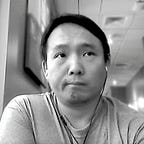All manual therapies may eventually share common grounds when explanations are based on good science and reasoning.
“Notice that the stiffest tree is most easily cracked, while the bamboo or willow survives by bending with the wind.” ~ Bruce Lee
I have been a fan of Bruce Lee’s philosophy of Jeet Kune Do (JKD) for at least seven years. Unlike most schools of thought in the martial art world, JKD does not focus on technique, form, or pattern, nor does it have a rigid set of rules and customs. In fact, it is formless and adaptive, allowing practitioners to freely choose to express and defend themselves in various (unpredictable) confrontations.
“Therefore, to attempt to define JKD in terms of a distinct style — be it kung fu, karate, street fighting or Bruce Lee’s martial art — is to completely miss its meaning. Its teaching simply cannot be confined within a system. Since JKD is at once ‘this’ and ‘not this,’ it neither opposes nor adheres to any style. To understand this fully, one must transcend from the duality of ‘for’ and ‘against’ into one organic unity that is without distinctions. Understanding of JKD is direct intuition of this unity.” ~ Bruce Lee, “Liberate Yourself From Classical Karate,” Black Belt Magazine, 1971
Dan Inosanto demonstrates JKD pretty well in this early 1980s documentary by BBC.
When I heard of Dermoneuromodulation (DNM) back in early 2014, I thought it was “just another technique,” but it has a very strong science base that emphasizes the nervous system and skin. After I learned about its principles, it sounds a lot like JKD.
Again, DNM is NOT “another technique” in manual therapy, just like JKD is NOT another martial art technique. DNM does not bound manual therapists to a specific way or philosophy of treating and communicating with patients or clients.
With a strong base in modern pain science (a combination of neuroscience, physiology, psychology, and primate social grooming behavior), DNM sets a foundation to guide therapists a more plausible explanation on what they are doing with their patients/clients (as opposed to what they are doing to them), how pain works, and a framework to allow therapists to deal with a variety of problems that patients/clients bring to their practice — regardless of what technique they are currently using.
Although I have not taken a DNM course (yet), I have read much of the past and modern theories, research, and misconceptions about pain, from the works of Moseley, Butler, Lin, O’Sullivan, Thompson, and Saragiotto/Yamato, to Diane’s book about DNM and Todd Hargrove’s book “Better Movement.” But with what I already learned from massage school and my own exploration of different ways to modulate pain by touch, communication, movement, and environment (e.g. music, smell, lighting), I realize that I don’t have to follow a set pattern to help someone feel better — nor is there one technique that is the Holy Grail to alleviate pain.
I don’t need to muscle my way into clients’ tissues and try to “pop knots” or “break fascial adhesions” (Not very likely. The amount of force to break collagenous tissues is far too high for most humans to apply.)
Like JKD, I’m using what I already know, add a little bit of new techniques, modify them to different clients, and keep the work as simple as possible.
“Prolonged repetitious drillings will certainly yield mechanical precision, and security of that kind comes from any routine. However, it is exactly this kind of ‘selective’ security or ‘crutch’ that limits or blocks the total growth of a martial artist. In fact, quite a few practitioners develop such a liking for and dependence on their ‘crutch’ that they can no longer walk without it. Thus, any one special technique, however cleverly designed, is actually a hindrance.”
“Unfortunately, most students in the martial arts are conformists. Instead of learning to depend on themselves for expression, they blindly follow their instructors, no longer feeling alone, and finding security in mass imitation. The product of this imitation is a dependent mind. Independent inquiry, which is essential to genuine understanding, is sacrificed. Look around the martial arts and witness the assortment of routine performers, trick artists, desensitized robots, glorifiers of the past, and so on — all followers or exponents of organized despair.” ~ Bruce Lee, “Liberate Yourself From Classical Karate,” Black Belt Magazine, 1971
As I continue to learn about pain from all domains of the biopsychosocial model and the complexity behind human behavior and physiology, the more I realize that I should make my job and explanations simpler for myself and clients to understand. DNM is a window to a deeper understanding of how manual therapy works in relation to pain, human behavior, and how we humans should treat each other. It is not perfect, but for now — to me —it’s the best model we have to serve as guidance and to question.
And once you understand the principles, the techniques will follow.
“As to methods there may be a million and then some, but principles are few. The man who grasps principles can successfully select his own methods. The man who tries methods, ignoring principles, is sure to have trouble.” ~ Harrington Emerson
Further Reading
2. Jacobs DF, Silvernail JL. Therapist as operator or interactor? Moving beyond the technique. The Journal of Manual & Manipulative Therapy. 2011;19(2):120–121. doi:10.1179/106698111X12998437860794.
3. Moseley LG. What Is Pain? Body in Mind. Jan. 5, 2016.
